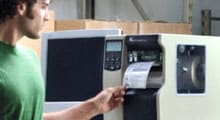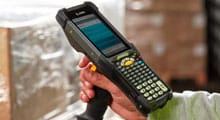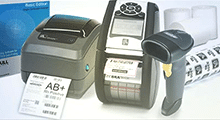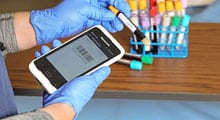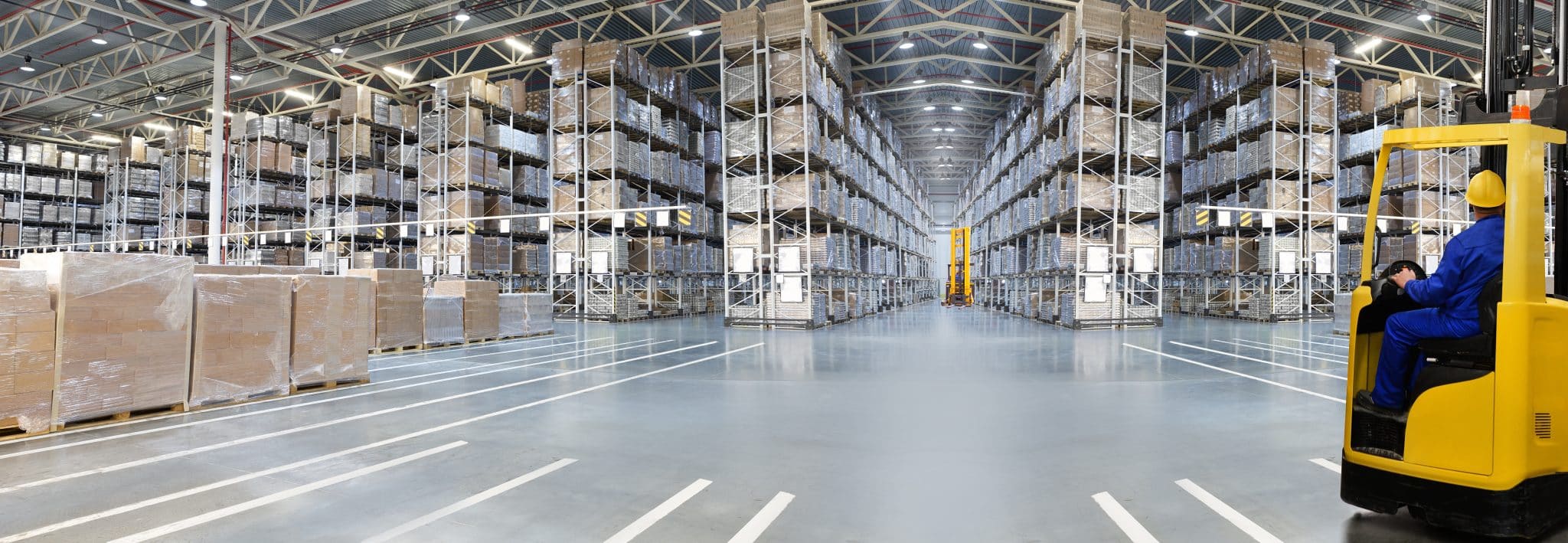Radio-frequency identification (RFID) has come a long way in the past few years, but this exciting tech revolution is only just beginning. Already, RFID is crucial in manufacturing, retail, and even healthcare. In these — and many other — sectors, RFID solutions deliver impressive efficiency while minimizing the potential for lost inventory and other costly problems.
As adoption of this technology becomes even more mainstream, it will prove indispensable in eCommerce, supply chain management, and many other areas of the modern economy. We already saw this technology being used for many different initiatives during the pandemic, including inventory management at testing sites and monitoring vaccine temperatures.
In fact, the global RFID market is expected to reach $57.2 billion by 2026 (compared to $27.1 billion in 2020). These market trends speak to the importance of businesses learning how RFID’s current and future applications apply to their operations.
Today’s consumers are more demanding than ever, and often, only advanced RFID solutions allow businesses to meet these heightened expectations. COVID-19 brought about many concerns such as contactless shipping, labor shortages, and strict hygiene protocols, which have all had an overwhelming impact on RFID systems.
Gaining an edge in the quickly shifting global supply chain means staying on top of the newest and most exciting uses of RFID as well as learning about the latest ways to integrate it into different processes. To help, we’ve outlined a few of the emerging and future developments we can expect with this technology below.
New RFID Technology & Future Applications
While a lot of exciting RFID and barcoding developments are already underway, we anticipate that many additional applications will arrive in the near future. We are especially looking forward to seeing these solutions come to fruition:
Flexible Printing Options
Many of today’s most promising RFID tags are thinner and more flexible than we could have imagined even a few short years ago. Powered by high-performance thin-film transistor technology, they can be mounted to a wide array of surfaces.
Under this approach, RFID functions can be incorporated within a flexible substrate that is remarkably resistant to bending. The result? Versatile applications that avoid the physical strain sometimes placed on conventional solutions. As such, RFID systems will be a realistic option in settings that once seemed out of reach.
Integrations with Other Technologies
The very structure of today’s RFID tags makes them uniquely versatile, but exciting new integrations take this to the next level. Already, warehouse management systems (WMS) based on RFID improve traceability and precision for everything from picking to delivery.
In the near future, smart-sensing RFID solutions will bring the best of the Internet of Things (IoT) to the modern warehouse. Under this approach, sensors will allow systems to track temperature and many other factors that influence supply chain operations.
Another important shift is also underway: the increasing use of active instead of passive RFID tags. Some enterprises previously avoided active solutions due to their higher costs and often limited shelf life. Due to recent improvements in batteries, however, active RFID can be counted on to provide greater accuracy in long-range monitoring. This makes it a compelling option for monitoring healthcare equipment or maintaining strict access control.
Cloud-Based Data Storage
Mobility has long represented one of the chief advantages of RFID technology. This benefit will take on a whole new dimension as cloud-based data storage becomes an integral component of tomorrow’s RFID systems.
When stored in the cloud, real-time data becomes far more accessible, thereby enhancing stock accuracy, product availability, and replenishment. Cloud systems can streamline processes in all areas of the supply chain, thereby improving productivity and accuracy among warehouse employees, IT experts, and a variety of other critical team members.
More Innovative Applications
Beyond the materials and technologies highlighted above, RFID trends will evolve as industry leaders come up with new ways to make the most of these solutions. Increasingly, these systems will be appreciated for what they really are: not just tags, but interconnected solutions that incorporate a variety of applications and readers.
Eventually, these systems will be available not only within warehouses or even healthcare facilities but also within the many other locations in which users spend their time. In the future, for example, consumers may be able to install their own RFID readers at home. They can use these to integrate RFID-related data with various management systems and Internet of Things devices.
The possibility for widespread application is illuminated, to an extent, by the success of E-ZPass. This tolling solution saves drivers time by limiting tollgate traffic. One day, this will be just one of many creative applications that bring RFID out of the warehouse and into the hands (and vehicles) of everyday consumers.
As RFID applications become more widespread, they’ll also be far more targeted. This phenomenon finds its basis in the increasing popularity of item-level tagging, in which individual products or assets are tracked to dramatically improve visibility in the warehouse and on the road.
While the idea of tracking individual items is not exactly new, the supporting technology is now strong enough to make this a realistic — and surprisingly low-cost — opportunity. Already, many large-scale retailers have adopted item-level tagging, with smaller enterprises in a variety of industries expected to follow suit. As they take on item-level solutions, these organizations will gain a competitive advantage in the form of impressive visibility and ultimately, greater accuracy in forecasting.
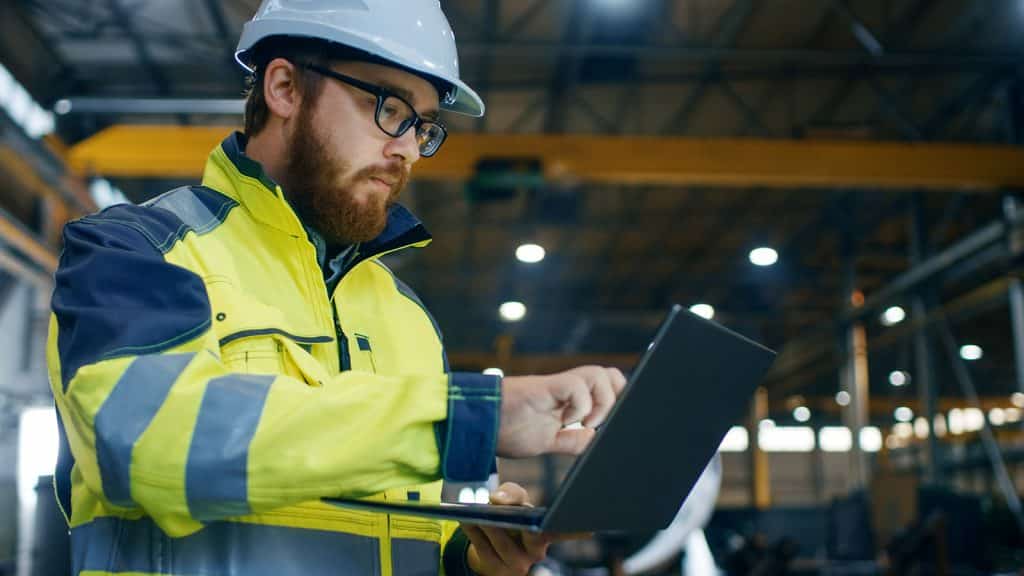
The Future of RFID vs. Barcoding
Like RFID, barcoding shows a great deal of promise. Perhaps most notably, 2D barcodes (such as QR codes) are becoming commonplace. They’ve seen a surge in use since the pandemic, especially in restaurant settings where they are used in place of a handheld menu.
We expect that these will be even easier to scan in the future. Even more important, however, is their ability to hold thousands of characters, ensuring that they transmit far more information and actionable data than the 1D barcodes of yesteryear.
RFID and barcoding need not be an either-or consideration. These technologies hold many notable differences, but businesses often benefit from implementing both — so long as they understand which technology will result in a more desirable solution in different situations.
The interplay between these systems will evolve right alongside the technologies themselves, with both benefiting from improvements in cloud storage and printing solutions.
As enterprises shift away from the former either-or approach, many will use them together as a failsafe solution. Redundancy barcoding, for example, can be effective in customer-oriented situations in which, although rare, RFID tags can be damaged.
Meanwhile, barcodes sometimes hold noteworthy limitations related to line of sight, automation, and storage capacity. These problems can be mitigated, to an extent, with help from enterprise barcode labeling software, which delivers real-time monitoring and impressive integrations. At times, however, RFID may also be required.
As converged technologies, barcodes and RFID solutions can dramatically improve business intelligence, thereby enhancing the already noteworthy benefits of both systems — and mitigating their respective weaknesses.
How This Technology Can Benefit Your Business
The sooner you get in on cutting-edge RFID solutions, the better. This technology is poised to take over the supply chain — and the enterprises that fail to keep up will be at a huge disadvantage.
Peak Technologies can help you avoid this fate by guiding you through the planning and setup process. We’ll assist you in developing and implementing an RFID system that allows you to meet your unique goals.
Contact us today to learn more about our current solutions — and our commitment to cutting-edge logistics and supply chain technology.








